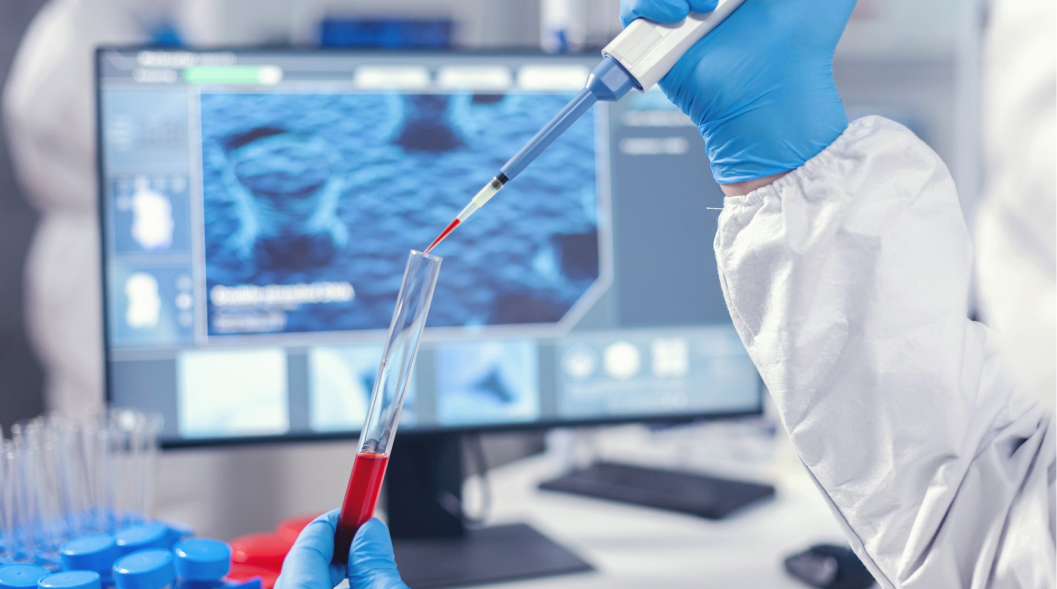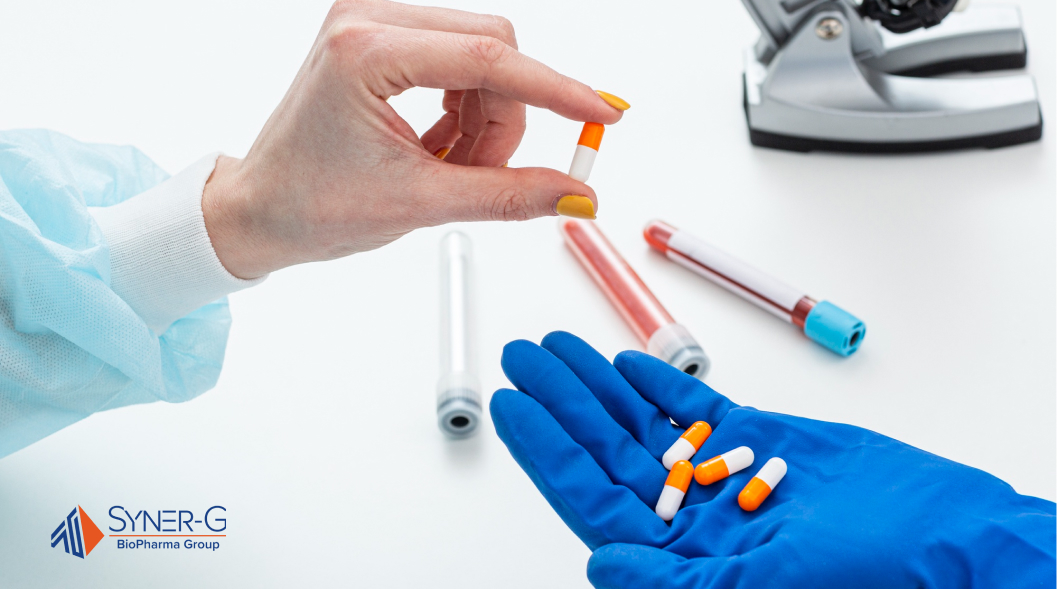The pharmaceutical landscape has evolved dramatically since the first synthetic drugs were developed over a century ago, highlighting the ongoing debate of biologics and small molecules. Today, healthcare providers can choose between traditional small-molecule drugs and sophisticated biological therapies, each offering unique advantages in treating disease.
This evolution marks a significant shift in how we approach drug development and patient care, promising more targeted and effective treatments for a wide range of conditions.

Small Molecules: The Traditional Approach
For decades, small-molecule drugs have been the cornerstone of pharmaceutical innovation. These synthetic compounds, typically weighing less than 900 daltons, are meticulously designed to target specific biological pathways in our cells. Think of them as tiny molecular keys precisely crafted to fit cellular locks.
Manufacturing Process
The manufacturing process of small molecules is exquisite in its simplicity—at least compared to biologics. Through controlled chemical reactions in laboratory settings, pharmaceutical companies can synthesize these compounds consistently and at scale.
The process involves well-established organic chemistry techniques, often allowing for production in standard manufacturing facilities. This predictability in manufacturing translates to more stable supply chains and generally lower production costs.
Key Characteristics
What makes small molecules particularly valuable in medicine? Their compact size allows them to easily penetrate cell membranes and navigate throughout the body. Most can be taken orally, as their chemical structure remains stable in our digestive system.
Scientists and clinicians often prefer small molecule therapeutics due to their low molecular weight and compact size of under 900 daltons. These compounds interact with drug-metabolizing enzymes in the liver, allowing for predictable metabolism and clearance from the body.
They’re also typically stable at room temperature, making them convenient for both storage and patient use. However, this accessibility comes with a trade-off—they may interact with unintended targets, sometimes leading to side effects.
Cost Considerations
From a cost perspective, small molecules typically require significant upfront investment in research and development, but their manufacturing costs are relatively modest. Once developed, the straightforward production process and stability characteristics often result in lower treatment costs for patients compared to biologics.
Market Success Stories
The market is rich with successful small-molecule medications. In fact, most drugs on the market today are small molecules manufactured through chemical synthesis. Statins like Lipitor® revolutionized heart disease treatment. Antidepressants such as Prozac® transformed mental health care.
More recently, targeted cancer therapies like Gleevec® have demonstrated the continuing potential of small molecule innovation. These medications have collectively helped millions of patients worldwide, showcasing the enduring value of small-molecule drug development.

Biologic Drugs: The Revolution in Medicine
Biologics represent nature’s complexity harnessed for healing. Biologic drugs are different because they are large, sophisticated molecules derived from living organisms—therapeutic proteins, antibodies, and other complex structures that work with our body’s natural processes.
Unlike their small molecule counterparts, biologics often contain 1,000-20,000 atoms and exhibit intricate three-dimensional structures.
Manufacturing Complexities
Manufacturing biologics is more art than assembly line. These therapies are produced in living cells—typically Chinese Hamster Ovary (CHO) cells or E. coli—under precisely controlled conditions.
The process demands stringent oversight of temperature, pH, and nutrient levels. Even minor deviations can affect the final product’s safety and efficacy. This complexity translates to specialized manufacturing facilities costing upwards of $500 million to construct.
Size and Structure
Size matters in biologics. These therapeutic giants are typically 200-1000 times larger than small molecules, with highly specific shapes that precisely target disease mechanisms. Their size restricts them to injectable or infusible delivery methods, as they would break down in the digestive system.
They require careful temperature control, usually needing refrigeration to maintain stability.
Precision Targeting and Immune System Enhancement
Biologics have revolutionized treatment approaches by accessing previously “undruggable” targets that small molecules couldn’t effectively reach. Their sophisticated structures can bind to specific cell surface receptors and protein-protein interactions that small molecules struggle to influence due to their limited size and binding capabilities.
For example, monoclonal antibodies can precisely target specific proteins in cancer cells while simultaneously recruiting immune cells to attack the tumor—a dual mechanism of action that small molecules cannot replicate. This ability to engage the body’s immune system creates a powerful multiplier effect, where the biologic not only directly impacts the disease but also marshals the body’s natural defenses to enhance the therapeutic response.
Types of Biological Therapies
The biologics family encompasses diverse therapeutic approaches. Monoclonal antibodies like Humira® target specific proteins in autoimmune diseases, while protein therapeutics such as insulin restore missing biological functions. Antibody-drug conjugates (ADCs) combine antibody precision with small molecule potency, enabling targeted drug delivery that minimizes off-target effects.
Cell therapies, including CAR-T treatments, reprogram patient cells to fight cancer, while viral vectors and lipid nanoparticles serve as sophisticated delivery systems for genetic therapies. Each type leverages biological processes in unique ways to achieve therapeutic outcomes.
Market Growth and Impact
Market trends reflect biologics’ growing impact. The global biologics market reached $349 billion in 2023, with a projected annual growth of 12% through 2032. However, growth rates may vary slightly across different sources (some report 8-10% growth, depending on therapeutic focus).
Notably, eight of the top ten best-selling generic drugs globally are biologics. This growth stems from their effectiveness in treating previously intractable conditions and their potential for personalized medicine.
Head-to-Head Comparison: Understanding the Key Differences
When comparing small molecules and biologics in the pharmaceutical industry, several critical factors determine their effectiveness, accessibility, and market position.
Target Specificity and Mechanism
Small molecules often interact with multiple cellular targets, which can lead to both desired therapeutic effects and side effects. In contrast, biologics exhibit high target specificity – like a precision-guided missile – typically interacting with only one specific protein or cell type. This selectivity often results in fewer off-target effects but may also limit their therapeutic scope.
Administration Routes
Small molecules excel in convenience, with most being orally administered pills or capsules. Their stability allows for various delivery methods, including topical applications. Biologics, due to their size and complex structure, typically require injection or infusion. This limitation impacts patient compliance and requires the involvement of the healthcare provider in administration.
Storage and Handling
Most small molecules remain stable at room temperature, often lasting years with basic storage conditions. Biologics demand precise temperature control, typically requiring refrigeration (2-8°C) or even deep freezing. This cold chain requirement significantly impacts distribution logistics and healthcare provider storage capabilities.
Development Pipeline and Costs
Small molecule development typically costs $1-2 billion over 8-10 years. Biologics development averages $2-4 billion and takes 10-12 years. However, biologics often show higher success rates in clinical trials. Manufacturing capacity for biologics requires specialized facilities and expertise, driving up production costs.
Patent Protection Strategy
Small molecules face intense generic competition after patent expiration, with relatively straightforward pathways to generic approval. Biologics enjoy longer market exclusivity through complex patent protection strategies. Biosimilar development is more challenging and costly than generic small molecules, requiring extensive comparative studies and specialized manufacturing capabilities.
Clinical Applications
Understanding where each type of therapy excels helps healthcare providers make informed treatment decisions. The clinical applications of small molecules and biologics continue to evolve as our understanding of disease mechanisms deepens.
- Small Molecule Leadership: Dominate in central nervous system conditions (depression, anxiety, epilepsy), cardiovascular disease (statins, blood pressure medications), and diabetes management (metformin, DPP-4 inhibitors). Their ability to cross the blood-brain barrier and convenient oral delivery make them ideal for these acute and chronic conditions.
- Biologic Dominance: Excel in autoimmune diseases (rheumatoid arthritis, psoriasis, Crohn’s disease), where precise immune system modulation is crucial. Also led in targeted cancer cell therapy, with monoclonal antibodies revolutionizing the treatment of lymphoma, breast cancer, and melanoma.
- Treatment Transformations: Migraine treatment exemplifies therapeutic evolution: traditional small molecules provide acute relief, while new biologics like CGRP inhibitors prevent attacks. Similarly, asthma management evolved from bronchodilator pills to targeted biological therapies for severe cases.
- Combination Therapy Future: Emerging protocols combine small molecules and biologics, particularly in oncology. For instance, pairing kinase inhibitors with monoclonal antibodies in breast cancer treatment shows enhanced efficacy over either approach alone. This synergistic strategy represents the future of complex disease management.
Future Outlook: The Next Chapter in Drug Development
The pharmaceutical landscape continues to evolve with technological advances and changing healthcare needs.
- Emerging Technologies: AI and machine learning accelerate drug discovery for both types. Small molecules benefit from improved prediction of drug-target interactions, while biologics see advancement in protein engineering and cell line optimization. Gene therapy platforms continue advancing, with improved viral vectors and gene-editing technologies like CRISPR expanding treatment possibilities. Novel platforms like antibody-drug conjugates blend both approaches.
- Market Trajectory: Growth projections favor biologics, with an increasing focus on rare diseases and personalized therapies. Small molecules maintain relevance through innovative delivery systems and improved targeting capabilities. Both sectors embrace biosimilars and generic competition.
- Personalization Progress: Genetic profiling enables better patient-treatment matching. Small molecules advance with precise dosing and drug combinations, while biologics leverage biomarkers for patient selection. Cell therapies represent the ultimate personalization, using the patient’s own cells.
- Regulatory Evolution: Agencies adapt to accelerate approval processes while maintaining safety standards. Biosimilar pathways continue developing globally, while small molecule regulations focus on combination products and novel delivery systems. Real-world evidence gains importance in both sectors.
Bridging Traditional and Modern Medicine
The evolution of drug development showcases how small molecules and biologics each play vital roles in advancing patient care. While small molecules continue providing accessible treatments for common conditions, biologics push boundaries in treating complex diseases with unprecedented precision.
As we enter a new era of personalized medicine, the synergy between these therapeutic approaches promises innovative solutions for previously untreatable conditions.

